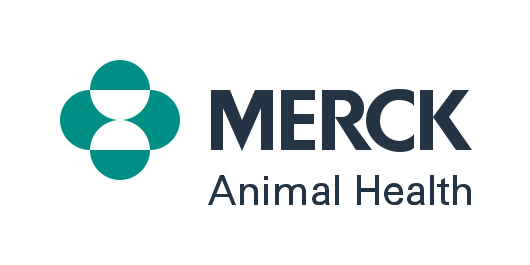

Equine Respiratory Update
Newsletter Archive
Equine Respiratory Update Current and Past Issues

New Voluntary Surveillance Data Published on Equine Influenza Virus
Fall 2023: Findings document disease trends and emphasize importance of pathogen identification in early management of outbreaks.
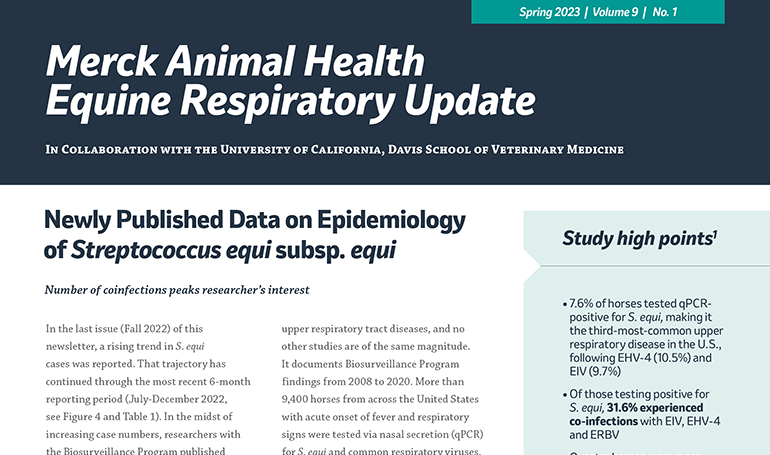
Newly Published Data on Epidemiology of Streptococcus equi subsp. equi
Spring 2023: In the last issue (Fall 2022) of this newsletter, a rising trend in S. equi cases was reported. That trajectory has continued through the most recent 6-month reporting period.
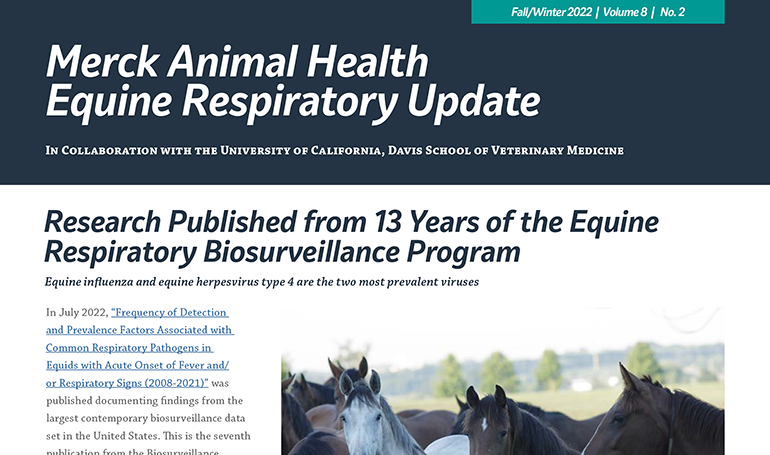
Research Published from 13 Years of the Equine Respiratory Biosurveillance Program
Winter 2022: Equine influenza and equine herpesvirus type 4 are the two most prevalent viruses
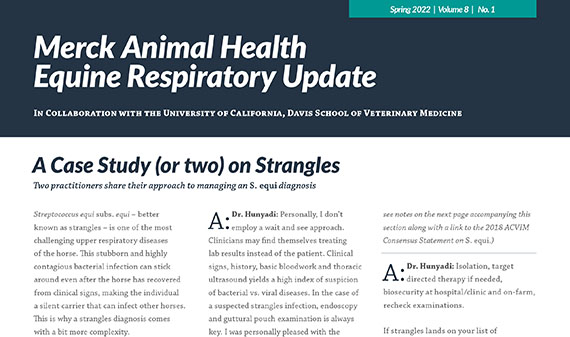
A Case Study (or two) on Strangles
Spring 2022: Two practitioners share their approach to managing an Streptococcus equi diagnosis
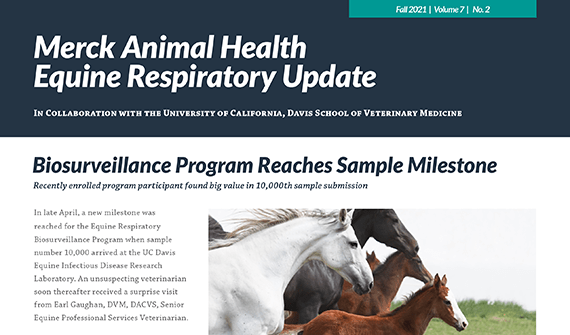
Biosurveillance Program Reaches Sample Milestone
Fall 2021: Program’s 10,000th sample arrives and most recent six-month respiratory disease trends. Plus, new series on the ins and outs of vaccination protocols.
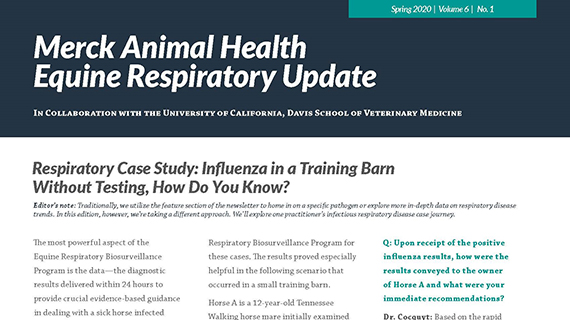
Influenza in a Training Barn
Spring 2020: Follow one practitioner’s infectious upper respiratory disease case journey.
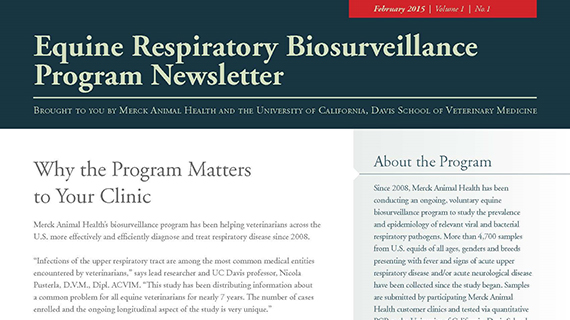
Why the Program Matters to Your Clinic
Spring 2015: The inaugural issue of the Equine Respiratory Update newsletter provides an overview of the Equine Biosurveillance Program, developed to study the prevalence and epidemiology of relevant viral and bacterial respiratory pathogens.
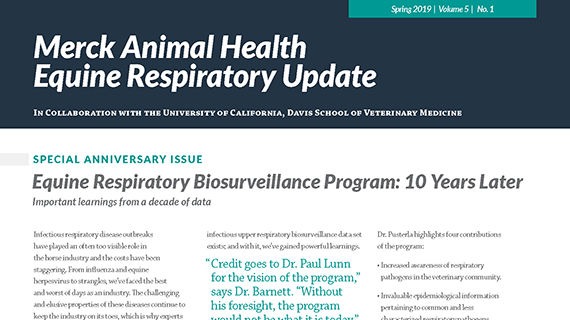
Equine Respiratory Biosurveillance Program: 10 Years Later
Spring 2019: Infectious respiratory disease trends in the industry, from influenza and equine herpesvirus to strangles.
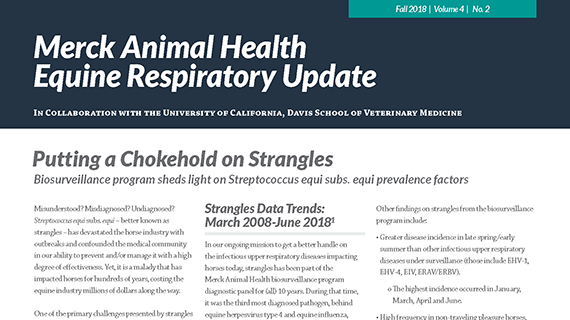
Putting a Chokehold on Strangles
Fall 2018: Biosurveillance Program sheds light on Streptococcus equi subs. equi (better known as strangles), prevalence factors.
No items to show.
